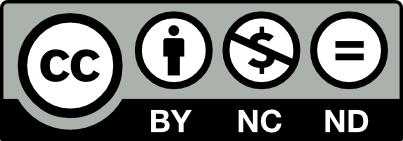Give your student a clear, strategic edge with a test prep plan designed by Adam Allouche, ESM Prep College MatchPoint’s Director of Test Prep. In this customized strategy session, Adam—a world-renowned SAT and ACT expert—will develop a detailed roadmap to align perfectly with your student's needs, ensuring that every prep hour is purposeful and geared toward maximizing their scores. With years of experience mentoring students at top-tier schools worldwide, Adam’s approach emphasizes precision, balancing academic review with targeted strategy to streamline preparation and build confidence. Free up your time while giving your student a plan that’s proven, personalized, and designed for competitive results—schedule a session with Adam today and set him on the path to success!
Mini-Guide: Build Your Junior Year Test Prep Plan Now
It’s not too late for juniors to start a strong test prep plan! November is the perfect time to build a strategy for the SAT or ACT, especially if you’re aiming to wrap up testing by senior year. Start by taking diagnostics to choose the test that best suits you, then map out a consistent study schedule that balances with your academics. Remember, even with test-optional policies, strong scores can make a big impact on your college applications

The PSAT’s Limitations and How to Get the Right Diagnostics
While the PSAT can introduce you to standardized testing, it’s not ideal for detailed test prep guidance. With its digital transition, the PSAT provides only broad score categories, lacking a question-by-question breakdown. This limited feedback makes it hard to build an effective study plan.
Instead, consider starting with diagnostic tests that provide specific insights into both the SAT and ACT. High-quality diagnostics provide a question-by-question breakdown to pinpoint strengths and weaknesses, so you can direct your study where it matters most.
Why this matters: A comprehensive diagnostic test gives you a realistic baseline and helps you decide which test—SAT or ACT—aligns best with your strengths.
Decide: SAT or ACT?
Choosing between the SAT and ACT is a key step. Here’s a quick comparison to help you make a confident choice.
- SAT: The digital SAT is now shorter, adaptive, and designed so that some questions weigh more heavily on your score. This adaptive scoring can make it harder to measure progress consistently across multiple test dates.
- ACT: The ACT’s linear structure remains straightforward and transparent, allowing you to track improvement between tests. If you prefer a consistent and predictable format, the ACT might be the better option.
A smart next step: Take diagnostics for both the SAT and ACT to find out which fits your style. Starting with the right test is half the battle!
Give Your Student the Competitive Edge with a
Custom SAT/ACT Roadmap
Create Your Timeline: When to Test
A solid timeline makes all the difference in managing test prep alongside junior-year responsibilities. Here’s how to approach it:
- Winter Diagnostics: Take diagnostics in November or December to identify the test best suited for you.
- Spring Testing: For most juniors, the first official SAT or ACT in early spring (February ACT or March SAT) aligns well with academic schedules and gives you time for possible retakes.
- Early Senior Year: Plan additional testing for fall of senior year if needed, but ideally wrap up testing by the end of junior year to reduce stress during college application season.
Why planning matters: By setting up a realistic timeline, you avoid last-minute cramming and can balance prep with school and activities.
Test-Optional ≠ Test-Ignorant
The rise of test-optional policies has led many students to wonder if standardized testing is even necessary. However, strong test scores still offer a competitive advantage at many selective colleges.
- Examples: Schools like UVA and the University of Pennsylvania have shown significant admission advantages for applicants who submit test scores. Submitting a solid score can be a game-changer.
Bottom line: Even if some schools don’t require scores, submitting them can strengthen your application. Research each college’s stance on testing to make an informed decision.
Mastering Your Test Prep Approach
To maximize your prep results, focus on specific areas that align with each test’s structure.
- SAT: With the new digital SAT, some questions carry more weight. Prioritize accuracy on “easier” questions, especially in the math section’s Student-Produced Responses (SPR), which have a significant impact on scores.
- ACT: Since the ACT’s format is linear, a structured approach with consistent pacing across sections will help you make continuous improvement.
Study tip: Target high-impact questions and practice consistently. For the SAT, emphasize careful reading and double-check answers on weighted questions. For the ACT, hone your pacing and manage time effectively across all sections.
Set a Steady Prep Routine
To build confidence, establish a steady and realistic test prep routine.
- Frequency: Treat test prep as a weekly priority. Carve out dedicated study time in your schedule, as if adding a class. Consistency beats cramming.
- Balance: While test prep is important, remember that junior-year grades are a top priority for admissions. Your test prep should support, not overshadow, your academic performance.
- Incremental Goals: After taking your initial diagnostic, set score goals that match your target colleges. Celebrate small wins to stay motivated.
Consistency is key: Spreading out your prep over the next several months reduces stress and maximizes improvement.
Tackle Test Anxiety with Proven Techniques
Test anxiety can hold back even the most prepared students, so addressing it early can make a big difference.
- Mindfulness and Relaxation: Practice deep breathing or visualization techniques during study sessions to stay calm and focused. Familiarity with these methods can reduce anxiety on test day.
- Positive Self-Talk: Encourage yourself with affirmations like, “I’m ready for this.” Building confidence in your abilities can significantly improve performance.
Quick tip: Remember, test anxiety is common and manageable. These techniques will help you stay calm and composed, turning nerves into focus.
Make Practice Tests Your Best Friend
Practice tests are invaluable for building test-day stamina and refining pacing.
- Realistic Practice: Taking full-length, timed tests simulates the actual test day experience and helps you identify areas where you might need to speed up or slow down.
- Reflection and Adjustment: After each test, analyze missed questions and adjust your study focus. Consistent practice with reflection builds confidence and reinforces progress.
Goal: Aim to take a full-length practice test at least once a month, with analysis sessions after each one.
Set Yourself Up for Success on Test Day
Preparation extends beyond study sessions. Being organized on test day helps you arrive calm and focused.
- Logistics: Confirm your test location, test time, and required materials well in advance. For digital SAT test-takers, ensure your device is charged, updated, and equipped with a reliable backup if needed.
- Self-Care: Prioritize sleep, hydration, and nutrition the day before the test. Arrive early, prepared, and focused.
Final Reminder: Trust your preparation. By this point, you’ve put in the work, so now it’s time to execute confidently.



